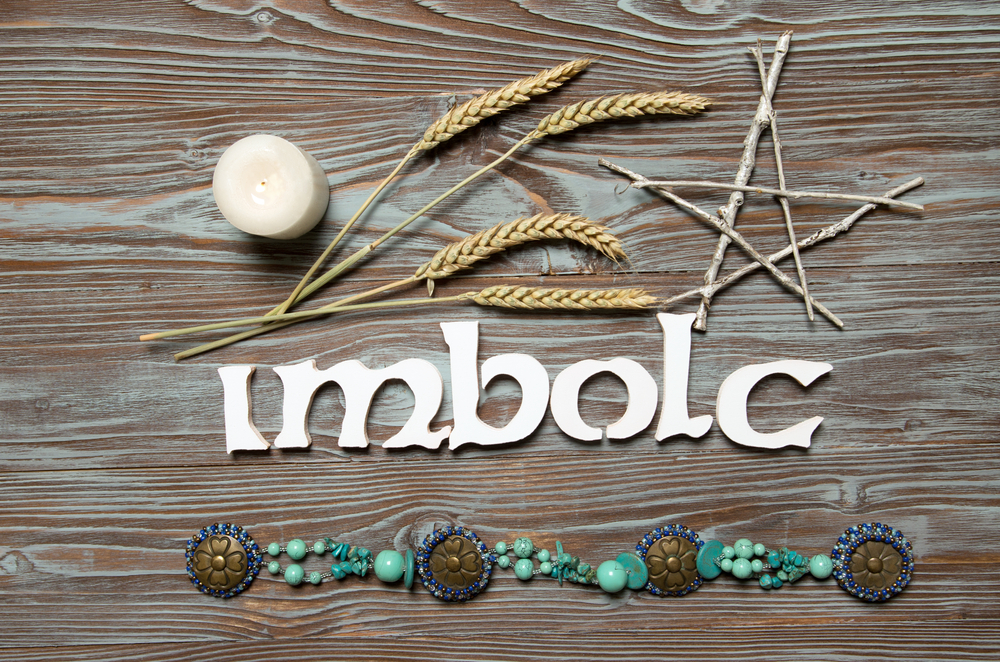An Imbolc Wedding

While many couples may wait until Valentine’s Day to have a romantic wedding where love is in the air, there’s another February holiday that’s just as sentimental, and we’re not talking about Groundhog Day. As loveable as Wiarton Willie is, we have another holiday in mind.
When Is It Celebrated?
Celebrated by Pagans in the Northern Hemisphere on February first or second, Imbolc is the Feast of the Goddess Brigid (or Brigit, Brig or Bree), one of the Tuatha Dé Danann, the deities of ancient Ireland. Imbolc celebrates that the promise of Yule has been kept — the light is returning after the longest night of the year. Some Pagans celebrate Imbolc as a midwinter festival; for others, it’s the first day of spring.
What Does Imbolc Mean?
Imbolc means “in the belly” or “in the milk,” referencing the many pregnant animals that give birth in the spring. In Greek mythology, it’s when Persephone lights her lamp in Hades and begins her journey back to the Earth; she’ll arrive in spring.
Who Is Brigid?
Brigid is the goddess of poets, healers, and smithcrafters, such as blacksmiths and coppersmiths. Poets all but embody love; the 40 million Valentine’s cards sent in Canada certainly attest to that. Poets know that a word after a word after a word is power, both to hurt and to conjure magic out of thin air. But healers and smithcrafters? How do they fit into the loving feelings of Imbolc?
Healers bring forth life and fight to protect it against all ills. What could be more loving than that? If not for healers, your beloved might not even be there for you. If he or she ever battled for life, you have a healer to thank for your loved one’s presence in your life, and vice versa. Ancient Celts would see Brigid in deep wells and dark ponds; she knew the power of the water from pools in healing and the water of the womb in producing life.
What Customs Are Part of an Imbolc Wedding?
In times gone by, couples would marry at the blacksmith’s forge, as Brigid is the goddess of blacksmiths in particular. The fire of the forge represents light, heat, and life. Couples would bind their hearts and symbolize that bind by handfasting: tying a cord around their joined hands. Pagans the world around still practice handfasting.
In olden days, brides would often carry a horseshoe in their bridal bouquet to symbolize Brigid’s presence at the forge. It would be decorated with red and white ribbons — Brigid’s colors of blood and milk, birth and life, snow and sun.
In modern times, the colors of red and white are often associated with Valentine’s Day. Red symbolizes love, lust, excitement and passion. Thus, hearts are most commonly depicted in red, or in pink, mixing the two colors together. White represents reverence, peace, good and marriage, hence the tradition in the Western world of wearing a white wedding dress.
An Imbolc wedding would see the altar decorated with red and white candles, even homemade ice candles representing the snow and sun together; horseshoes representing the forge; a bowl of water to represent the wells Brigid was often seen in; new plants; a book of poetry; the first flowers of spring, such as hyacinths, daffodils and snowdrops; and healing herbs scattered about.
The couple being married could wear robes of red or white and crowns of flowers to honor the Goddess Brigid. The cord binding their hands would be red, as the color of love.
If you want a romantic winter wedding, consider Imbolc as the date for your ceremony. May the Goddess Brigid bless your union, your hearth and your home, and see you prosper as your family grows through the years. So mote it be.

